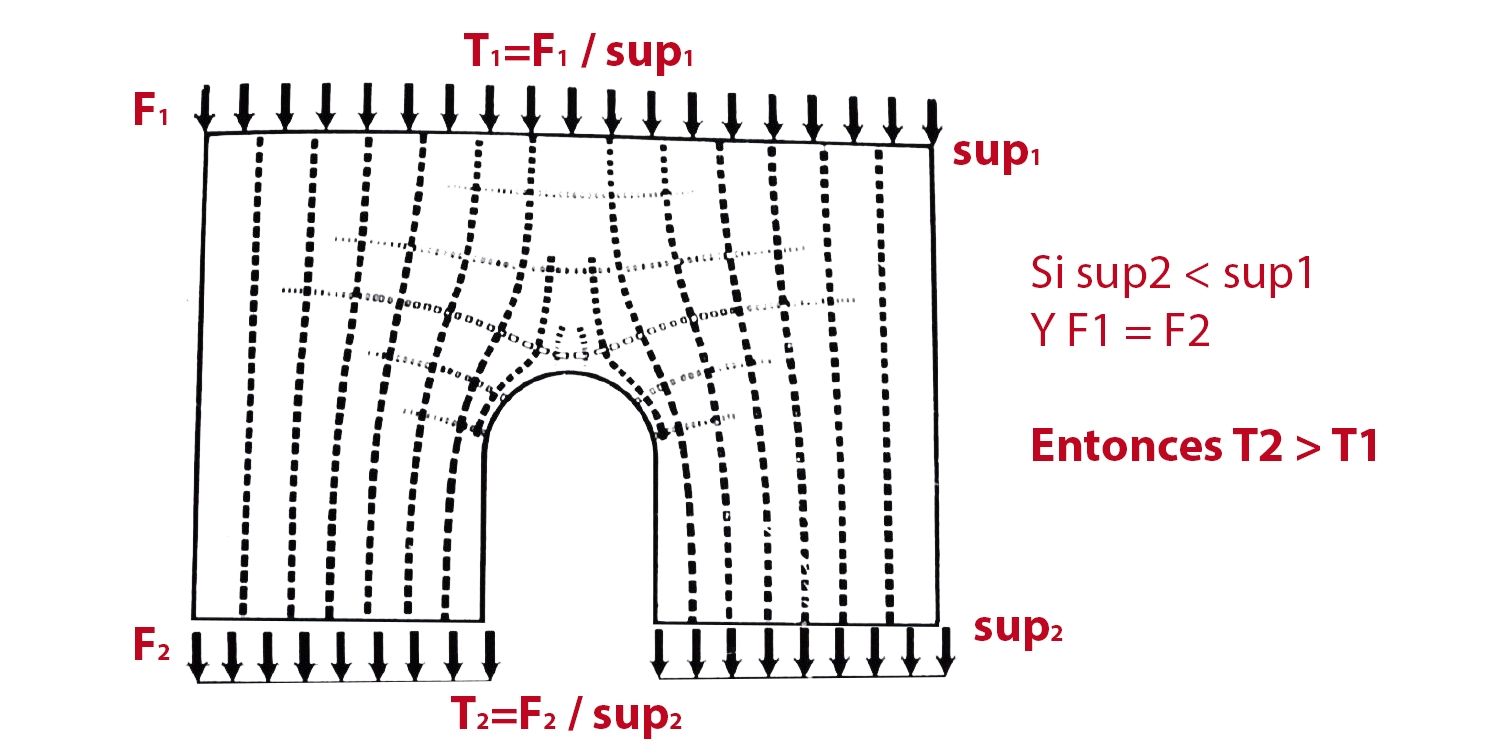In this project of reform in Barcelona we have been commissioned to communicate two rooms separated by a master wall. For remove a load-bearing wall , a piece in our case, and create A new door step, the most important thing first of all is to know how the loads are lowered by the wall that we are affecting.
Lowering of loads
You have to know the holes in that wall, from the foundation to the top: windows, doors, etc. and also know the composition of the wall, material changes, alterations, etc. to know how the loads go down to the foundation and then check how the modification we propose will affect that load reduction.
It is convenient to carry out tastings on the walls to know the material from which they are made: if they are solid brick walls, if they are perforated, or if they are hollow brick (be careful because we have sometimes found, in buildings in Barcelona, walls made with the typical “tochana� of two joints)
To exemplify the importance of decreasing loads, see the graph below. It is an analysis of the modification of the stresses that the materials will have to resist due to the influence of the gaps. A force F1 that comes from the top floor, has to pass to the bottom floor F2 to reach the foundation. If we neglect the weight of the plant itself, we can consider that F2 will be equal to F1, however, as you can see, the surface of the material (brick work, for example) that will have to withstand that force is less.
Given that Tension is a force between the surface, how can we understand that if we reduce the surface due to gaps or doorways, the tension it has to withstand increases. Note that the Tension that our shoring has to withstand can increase a lot due to the simple presence of holes in the upper floor.

Calculation
In simple supports such as the one in this project, it is necessary to calculate both the shoring beam (logically) and the supports (in case it could cause) and sometimes the side jambs. The important thing in the calculation is that the Service Limit States are well checked (this means so that it does not deform excessively) and not only the Ultimate Limit States (this means the calculation so that it does not break).
The deformations are more important than the breaks in the calculation since they are usually much more restrictive. A deformation greater than the norm could cause serious cracks in the upper deck.

Process of the execution
People often believe that the most important thing about load-bearing wall shoring is to get the shoring beam right. Well, absolutely not, most of the claims that occur in these types of works are in the execution phase. That is, the execution procedure is the most important since the beams due to safety factors and other factors are always oversized. In the construction process of this type of works there is a moment of maximum risk, it is the part called provisional shoring. In this our case, in this work in Barcelona, we made a shoring through HEB 100 pins and some props inclined to side and side that transmitted the loads to the center of the wall. Below you can see the construction steps that were followed:
[caldera_form id=�CF5eb736338bc09″]


















